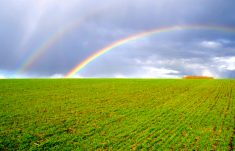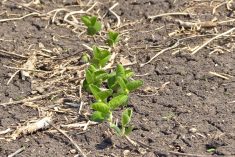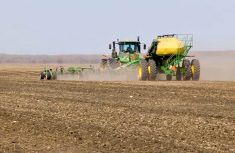MarketsFarm — Late-season rains wreaked havoc on the 2019 harvest season but were helpful in restoring topsoil moisture to key growing regions in the Prairies.
Since snow coverage has been variable across the Prairies so far in 2020, however, the growing season may get off to a rocky start.
“If we take a look at rainfall over a three-month period, since Nov. 1, [the Prairies] have been drier-biased for winter precipitation,” Drew Lerner, president of Kansas City-based World Weather Inc., said at Ag Days in Brandon.
Read Also

Senft to step down as CEO of Seeds Canada
Barry Senft, the founding CEO of the five-year-old Seeds Canada organization is stepping down as of January 2026.
According to the Palmer Drought Index, there are two “pools” showing drier-biased weather conditions: one stretches from northeastern Saskatchewan into northwestern Manitoba and the other is in southern Alberta.
“That area continues to have significant moisture deficit and will continue to for a while longer,” Lerner said, though he mentioned it’s “not necessarily a crisis” because many of those areas received some moisture before the ground froze.
“A dry winter is not necessarily an omen,” he said, emphasizing many areas of the Prairies are free of drought conditions. Southern Manitoba, in particular, may see a spring flood.
“There’s been a lot of moisture in southern Manitoba, and that’s a concern because of the Red River,” he said. Substantial snowfall in the U.S. Red River basin could result in flood conditions north of the border come spring, particularly if the spring thaw occurs very rapidly.
“Spring is going to be cooler than normal,” he said, but conditions will warm up rapidly, resulting in a quick melt.
Springtime weather in the Prairies is expected to be cooler than average, based on the 18-year cycle and ocean temperatures in the Gulf of Alaska.
“Oceans have a huge role to play in weather,” Lerner said. “What happens on the West Coast is critical to our growing season.”
Warmer-than-average ocean temperatures impact the jet stream across the Prairies, which influences how weather moves from west to east. “By looking at similar situations, we can try to predict what’s going on,” he said.
In 2005, for example, the Gulf of Alaska showed similarly warm temperatures, and the Prairies had a cooler spring. In 2020, a ridge of high pressure could result in cooler weather, particularly in the eastern Prairies.
“Soil temperatures will not rise as quickly as we want,” Lerner predicted.
He also cautioned Prairie producers to “not get too far ahead” come springtime.
“We might get some nice weather in April, but there’s high potential for freezing in May.”
— Marlo Glass reports for MarketsFarm, a Glacier FarmMedia division specializing in grain and commodity market analysis and reporting.














